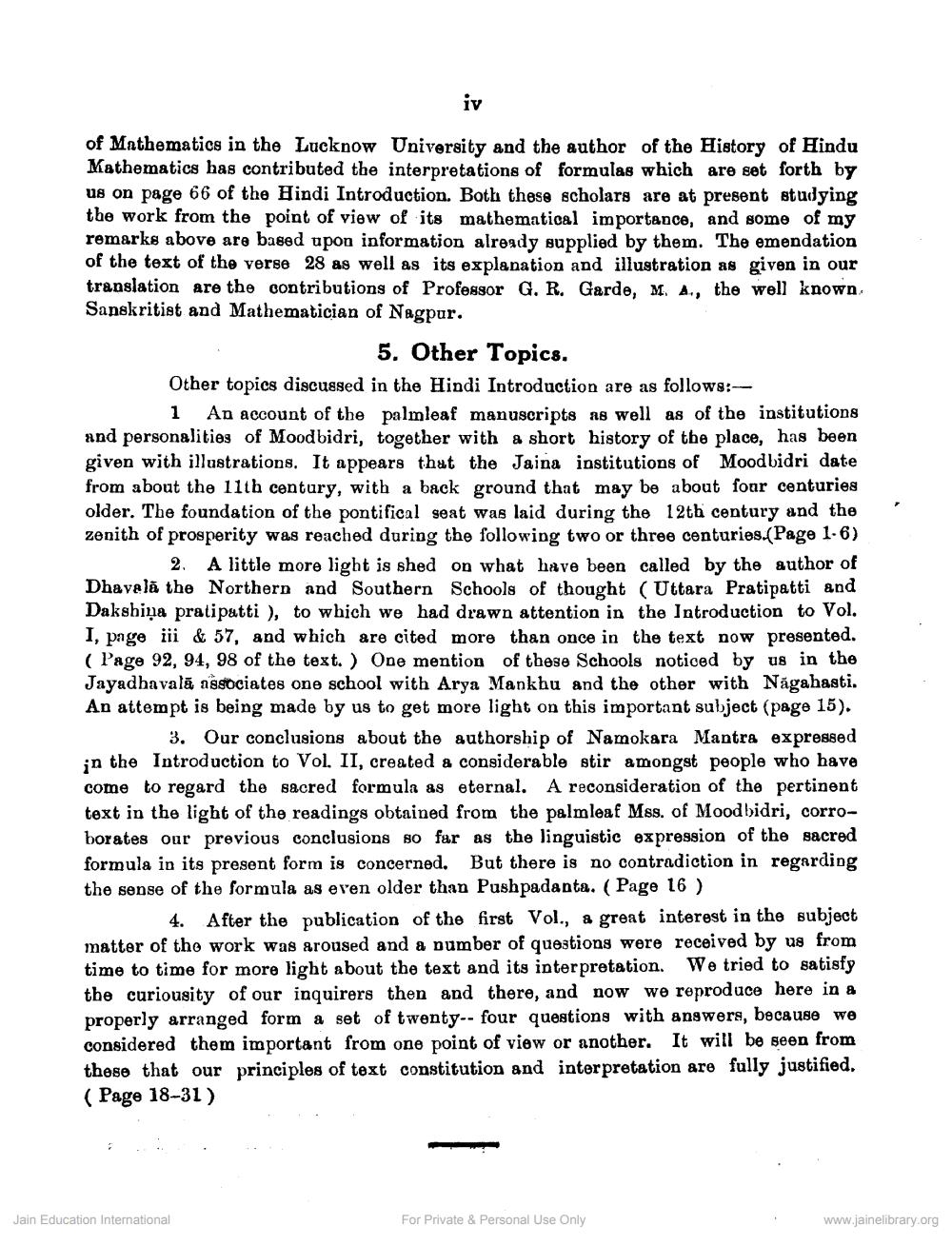________________
of Mathematics in the Lucknow University and the author of the History of Hindu Mathematics has contributed the interpretations of formulas which are set forth by us on page 66 of the Hindi Introduction. Both these scholars are at present studying the work from the point of view of its mathematical importance, and some of my remarks above are based upon information already supplied by them. The emendation of the text of the verse 28 as well as its explanation and illustration as given in our translation are the contributions of Professor G. R. Garde, M. A., the well known Sanskritist and Mathematician of Nagpur.
5. Other Topics. Other topics discussed in the Hindi Introduction are as follows:--
1 An account of the palmleaf manuscripts as well as of the institutions and personalities of Moodbidri, together with a short history of the place, has been given with illustrations. It appears that the Jaina institutions of Moodbidri date from about the 11th century, with a back ground that may be about four centuries older. The foundation of the pontifical seat was laid during the 12th century and the zenith of prosperity was reached during the following two or three centuries.(Page 1.6)
2. A little more light is shed on what have been called by the author of Dhavală the Northern and Southern Schools of thought (Uttara Pratipatti and Dakshiņa pratipatti ), to which we had drawn attention in the Introduction to Vol. I, page iii & 57, and which are cited more than once in the text now presented. ( Page 92, 94, 98 of the text. ) One mention of these Schools noticed by us in the Jayadhavală associates one school with Arya Mankhu and the other with Nagahasti. An attempt is being made by us to get more light on this important subject (page 15).
3. Our conclusions about the authorship of Namokara Mantra expressed in the Introduction to Vol. II, created a considerable stir amongst people who have come to regard the sacred formula as eternal. A reconsideration of the pertinent text in the light of the readings obtained from the palm leaf Mss. of Moodbidri, corroborates our previous conclusions so far as the linguistic expression of the sacred formula in its present form is concerned. But there is no contradiction in regarding the sense of the formula as even older than Pushpadanta. ( Page 16 )
4. After the publication of the first Vol., a great interest in the subject matter of the work was aroused and a number of questions were received by us from time to time for more light about the text and its interpretation. We tried to satisfy the curiousity of our inquirers then and there, and now we reproduce here in a properly arranged form a set of twenty-- four questions with answers, because we considered them important from one point of view or another. It will be seen from these that our principles of text constitution and interpretation are fully justified. ( Page 18-31)
Jain Education International
For Private & Personal Use Only
www.jainelibrary.org




